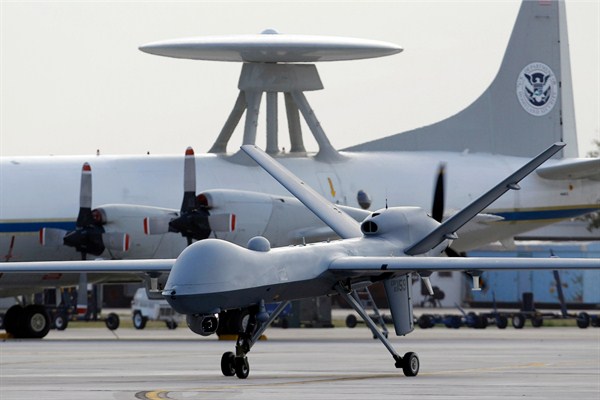As a presidential candidate, Donald Trump took intransigent stands on several prominent issues, notably immigration and trade. But he also said he was “totally flexible on very, very many issues,” leaving considerable ambiguity about where he would take the United States on a range of domestic and foreign policies.
He was silent, for example, on the use of unmanned aerial vehicles, or drones, for counterterrorism. He did say in November 2015 that he “would bomb the hell out of” the self-proclaimed Islamic State, but the U.S.-led coalition has done plenty of that. Since it began hitting targets in Iraq and Syria in August 2014, the campaign has amounted to about 12,354 airstrikes over 27 months and killed, according to its commander, about 45,000 Islamic State militants.
Importantly, however, the war against the Islamic State is not the main or at least most controversial battleground associated with the use of drones for counterterrorism; Pakistan, Yemen and Somalia are. The United States has conducted more than 500 strikes in those countries in the past decade, mainly under former President Barack Obama. These strikes have met with considerable criticism for a number of reasons, not least that—in Obama’s own words—they moved the United States toward a “boundless ‘global war on terror’” by removing the “government from the public scrutiny that a troop deployment invites.” They had become, he conceded, “a cure-all for terrorism.”

